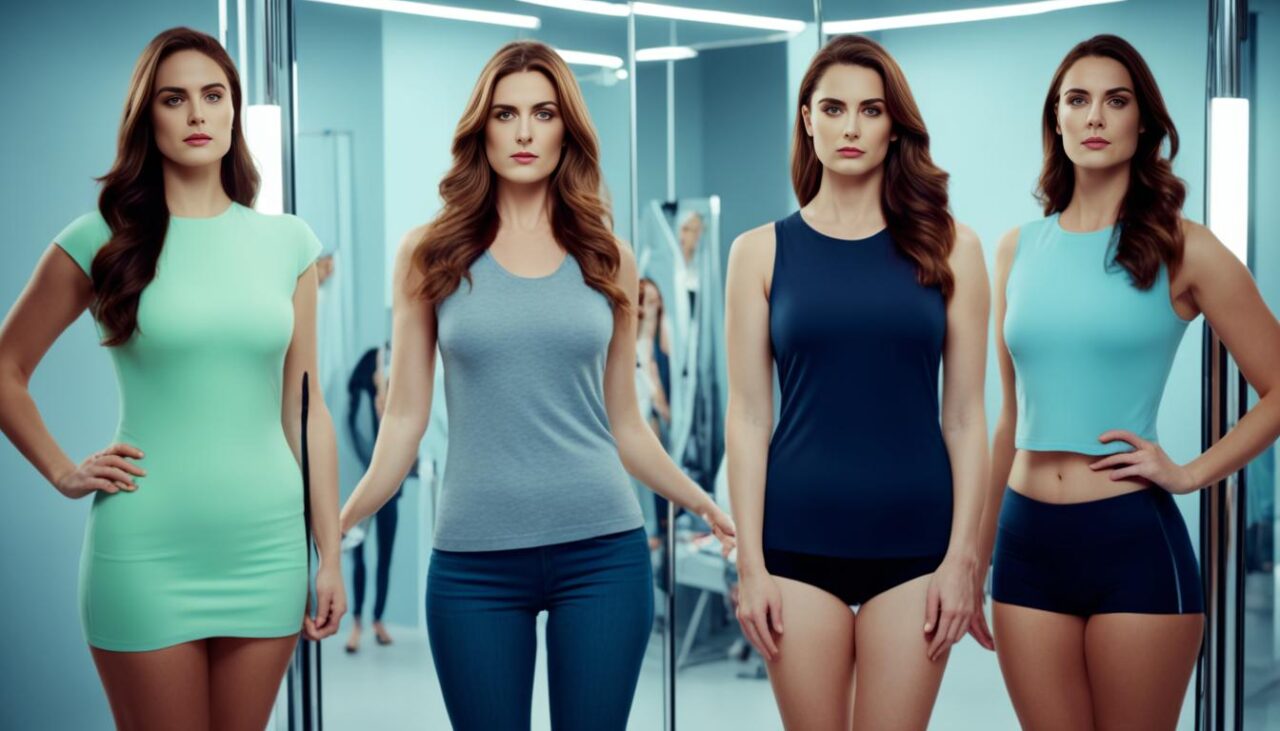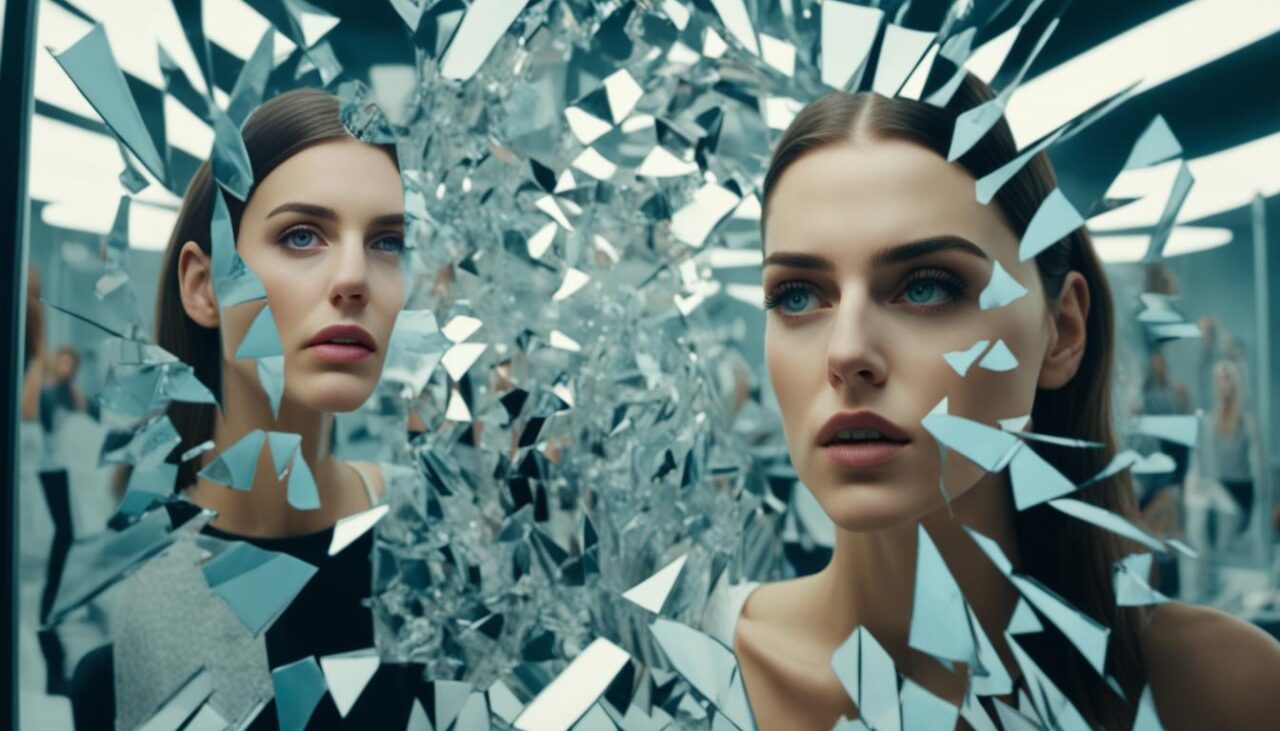Media beauty norms have become deeply ingrained in our society, shaping societal expectations and influencing individuals' perception of attractiveness and body image. The constant exposure to idealized portrayals of beauty found in movies, advertisements, and social media has created a narrow standard that many feel compelled to conform to. This unspoken impact of media beauty norms on society cannot be underestimated.
From an early age, we are bombarded with images of flawless models and celebrities who embody the supposed epitome of beauty. These media portrayals set unrealistic expectations for how we should look and what is considered attractive. As a result, many individuals develop negative body image and struggle with feelings of inadequacy.
Moreover, societal expectations fueled by media beauty norms can have detrimental effects on mental health. The pressure to achieve unrealistic standards of beauty can lead to anxiety, depression, and lower self-esteem. The relentless pursuit of perfection becomes a never-ending cycle of self-criticism and comparison.
It is crucial to recognize and challenge these beauty norms. By promoting diversity and inclusivity in media representation, we can shift societal expectations and foster a healthier understanding of attractiveness. It is time to celebrate and embrace the unique qualities and beauty that exist in all individuals, rather than conforming to a rigid and unattainable ideal.
In the following sections, we will delve deeper into the understanding of media beauty norms, their impact on body image, and explore ways to challenge and redefine these norms in order to create a society that celebrates diversity and promotes positive self-image.
Understanding Media Beauty Norms and Societal Expectations
In today's visual culture, media representation plays a crucial role in shaping beauty standards and societal expectations. These beauty norms, often reinforced through advertisements, television shows, and social media, have a profound impact on individuals' perception of attractiveness and body image.
Visual culture, encompassing various forms of media, such as images, videos, and films, plays a significant role in establishing and perpetuating beauty standards. The constant exposure to idealized portrayals of beauty can lead individuals to internalize these norms and strive to meet them, even if they are unrealistic or unattainable.
Media representation plays a powerful role in influencing societal expectations. The recurring images of slim and flawless models, predominantly portraying a narrow range of body types and features, create a distorted perception of beauty. This portrayal leads to a collective belief that conforming to these standards is the ideal and desirable goal.

The impact of media beauty norms goes beyond individual preferences. These standards also influence societal expectations, leading to a culture where appearance is often prioritized over other qualities and achievements. The pressure to conform to these beauty ideals can have significant consequences on an individual's self-esteem, mental health, and overall well-being.
As sociologist Simine Vazire said, “Visual culture plays a pivotal role in shaping our perception of beauty, influencing the way we see ourselves and the way we interpret others' attractiveness.”
It is important to be aware of the influence of media beauty norms on societal expectations and challenge the narrow definitions of beauty. By promoting diversity and inclusivity in media representation, we can create a more realistic and accepting environment that celebrates individuality and rejects unrealistic beauty standards. Initiatives and movements aimed at reshaping societal expectations and fostering a more inclusive understanding of attractiveness are crucial in breaking the cycle of harmful beauty norms.
The Impact of Media Beauty Norms on Body Image
Media beauty norms and societal expectations heavily influence individuals' perceptions of attractiveness and body image. The constant exposure to idealized portrayals of beauty in the media has profound effects on how individuals perceive themselves and their bodies.
Research has shown that the relentless depiction of unattainable beauty standards leads to body dissatisfaction and low self-esteem among individuals. The relentless pursuit of these norms often results in negative mental health outcomes.
By promoting unrealistic beauty ideals, the media perpetuates the notion that only a certain body type or appearance is desirable or worthy of attention. This narrow definition of beauty not only alienates individuals who do not fit these standards but can also lead to the development of unhealthy thoughts and behaviors surrounding body image.

“The societal pressure to conform to these norms can have severe consequences on individuals' mental health and well-being.”
For many individuals, media beauty norms create an unattainable standard against which they continually measure themselves. The constant exposure to images of flawless and airbrushed models can lead to feelings of inadequacy and self-consciousness. This can create a cycle of negative thoughts and behaviors, including body shaming, disordered eating, and a distorted perception of one's own body.
It is crucial to recognize the impact of media beauty norms on body image and work towards promoting positive body acceptance and inclusivity. By challenging these norms and embracing diverse representations of beauty, we can foster a healthier relationship with our bodies and promote acceptance for all individuals, regardless of their appearance.
Challenging Media Beauty Norms: Promoting Diversity and Inclusivity
The impact of media beauty norms and societal expectations on body image cannot be underestimated. The visual culture perpetuated by the media plays a significant role in shaping our understanding of attractiveness. However, it is important to challenge these norms and create a more inclusive representation of beauty.
Efforts have been made to redefine the traditional standards of beauty and promote diversity in media. Brands like Dove and Aerie have embraced real beauty by featuring women of different body types, sizes, and ethnicities in their ad campaigns. This shift in representation helps individuals develop a more positive body image and challenges the narrow definition of beauty perpetuated by the media.
Social media has also played a pivotal role in challenging media beauty norms. Influencers and content creators have started promoting body positivity and self-acceptance by sharing unedited and unfiltered images. By doing so, they are shifting the focus from unrealistic standards to embracing diversity and empowering individuals to love themselves as they are.
Ultimately, it is crucial for society to recognize the power of visual culture and media representation in shaping beauty norms. By actively promoting diversity and inclusivity, we can redefine societal expectations and foster a more inclusive understanding of attractiveness. It's time to embrace the beauty in all its forms and challenge the unrealistic standards set by the media.







